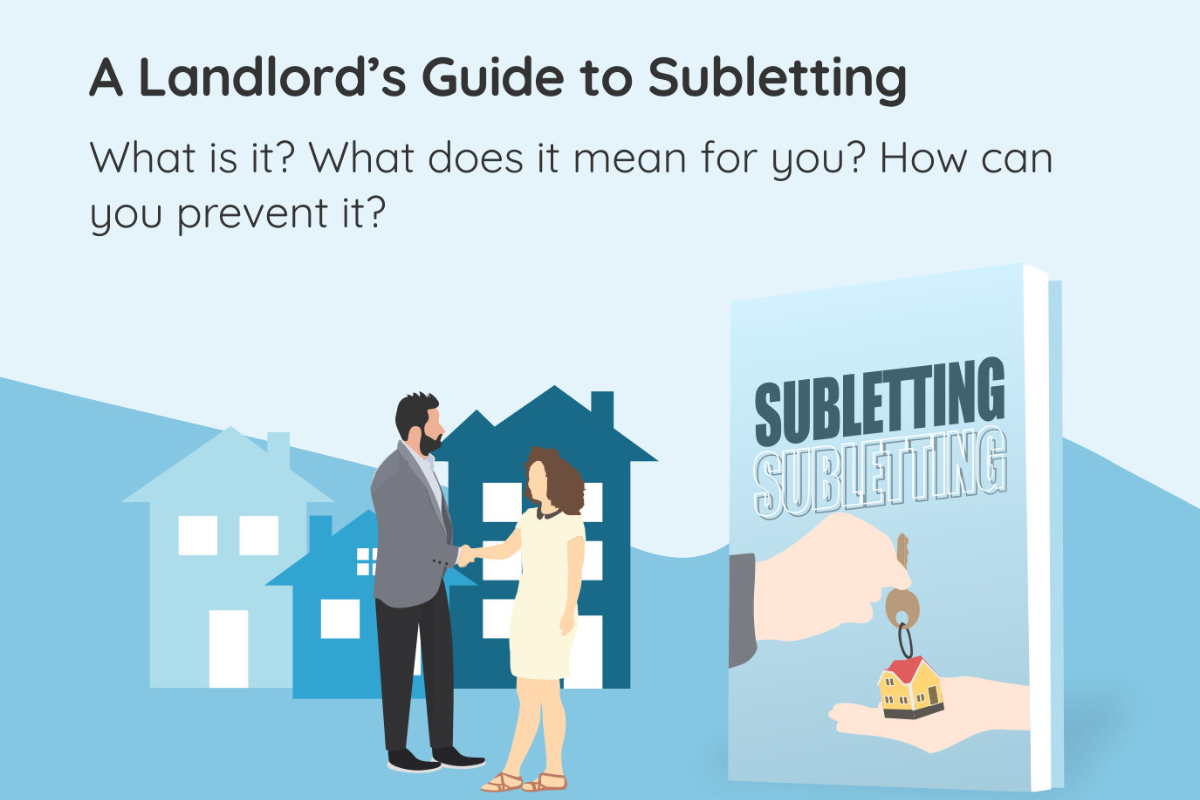Life rarely follows the schedule of a lease agreement. Whether you’ve landed a dream job in another city, received an opportunity to study abroad, or simply need help covering rent, subletting might be the solution you’re looking for. But what exactly is subletting, and how does it work?
Subletting is when a tenant rents out all or part of their rental property to another person while remaining responsible to their landlord under the original lease. This arrangement creates a unique three-way relationship between the landlord, original tenant, and subtenant that comes with specific rights, responsibilities, and legal considerations.
Understanding subletting is crucial whether you’re a renter exploring your options, a landlord protecting your property, or someone considering becoming a subtenant. This guide breaks down everything you need to know about subletting, from the basics to the legal requirements.
Understanding Subletting: The Basics
At its core, subletting involves an existing tenant (the sublessor) renting their space to someone else (the subtenant or sublessee). The original tenant becomes a “sub-landlord” while maintaining their obligations under the primary lease agreement.
Here’s how subletting works in practice:
- The original tenant remains legally bound to their lease agreement with the landlord
- The subtenant pays rent to the original tenant, not directly to the landlord
- Two separate rental agreements exist: one between the landlord and original tenant, and another between the original tenant and subtenant
- The original tenant stays responsible for rent payments, property maintenance, and lease compliance
It’s important to note that having a roommate or flatmate who shares the property with you is not considered subletting. In roommate situations, the original tenant retains possession of the entire property and simply shares the space.
Why Tenants Choose to Sublet
Subletting serves various practical purposes for renters facing changing circumstances. Understanding these motivations can help both landlords and potential subtenants navigate subletting arrangements more effectively.
Temporary Job Relocations
Professional opportunities often require short-term relocations. Rather than breaking their lease and facing penalties, tenants may sublet their space during temporary work assignments. This approach allows them to maintain their original rental while pursuing career advancement.
Extended Travel and Study Abroad
Students participating in semester-long study abroad programs frequently sublet their apartments. Similarly, tenants planning extended vacations or travel can offset rent costs by subletting during their absence.
Financial Flexibility
Economic challenges sometimes make full rent payments difficult. Subletting can provide financial relief by having a subtenant cover all or part of the monthly rent. This arrangement helps tenants avoid falling behind on payments while maintaining their housing.
Avoiding Lease Break Penalties
Breaking a lease early often involves substantial fees and potential damage to credit scores. Subletting offers an alternative that allows tenants to honor their lease agreement while addressing changed circumstances.
Maintaining Property Investment
For tenants who view their rental as a temporary investment in a particular location, subletting keeps the property occupied and prevents deterioration during absences. This strategy works particularly well in competitive rental markets where finding similar accommodations later might prove challenging.
Legal Considerations and Tenant Rights
Subletting operates within a complex legal framework that varies by location and lease agreement terms. Most lease agreements include specific clauses addressing subletting, and unauthorized subletting can result in lease violations or even eviction.
Landlord Permission Requirements
Many lease agreements require tenants to obtain written permission before subletting. This requirement protects landlords by allowing them to screen potential subtenants and ensure their property remains in good hands. Some landlords may charge application fees or require background checks for proposed subtenants.
State and Local Regulations
Subletting laws differ significantly across jurisdictions. Some areas provide tenants with explicit rights to sublet (with reasonable restrictions), while others give landlords more discretionary power. Research your local tenant rights and subletting regulations before proceeding with any arrangement.
Liability and Responsibility
Original tenants remain fully liable for their lease agreement obligations, even when subletting. This means if a subtenant damages the property or fails to pay rent, the original tenant must address these issues with their landlord. This ongoing responsibility represents one of subletting’s primary risks.
Subletting vs. Other Rental Arrangements
Understanding the distinctions between subletting and similar arrangements helps clarify rights and responsibilities for all parties involved.
Subletting involves the original tenant renting to a subtenant while maintaining their lease obligations. The subtenant has no direct relationship with the landlord.
Assignment transfers the entire lease agreement from the original tenant to a new tenant, who then deals directly with the landlord. The original tenant typically exits the arrangement completely.
Adding a roommate involves bringing someone into an existing living situation without transferring any lease responsibilities. The original tenant retains full possession and control of the rental.
Best Practices for Successful Subletting
Whether you’re considering subletting your space or becoming a subtenant, following established best practices protects everyone involved.
For Original Tenants
Screen potential subtenants carefully, just as landlords screen tenants. Request references, verify income, and consider running background checks. Create a detailed subletting agreement that outlines rent amounts, payment schedules, house rules, and duration of the arrangement.
Maintain open communication with your landlord throughout the process. Even if your lease doesn’t explicitly require permission, informing your landlord about subletting arrangements demonstrates good faith and may prevent future conflicts.
Document the property’s condition before the subtenant moves in, similar to how landlords conduct move-in inspections. This documentation protects you from being held responsible for damages you didn’t cause.

For Potential Subtenants
Verify that the person offering the sublet actually has legal authority to do so. Request to see the original lease agreement and confirm that subletting is permitted. Be wary of arrangements that seem to circumvent normal rental processes.
Understand your rights as a subtenant, which may differ from traditional tenant rights. In many jurisdictions, subtenants have fewer protections and may face easier eviction if disputes arise.
Get everything in writing. A clear subletting agreement protects your interests and clarifies expectations about rent, utilities, house rules, and the arrangement’s duration.
Making Informed Subletting Decisions
Subletting offers valuable flexibility for tenants facing changing circumstances while providing landlords with continued rent payments and property occupation. However, these arrangements require careful consideration of legal requirements, financial implications, and personal circumstances.
Success in subletting depends on clear communication, proper documentation, and understanding the rights and responsibilities of all parties involved. Whether you’re exploring subletting as a solution to changing life circumstances or considering a subletting opportunity, take time to research local laws, review lease agreements carefully, and establish clear expectations with all parties.
For those navigating the complexities of rental arrangements, consulting with local tenant advocacy organizations or legal professionals can provide valuable guidance specific to your situation and location.
FAQ About Subletting
What is subletting?
Subletting occurs when a tenant rents out their leased property, or a portion of it, to another individual (the subtenant) while maintaining responsibility for the lease agreement with the landlord.
Is subletting legal?
Subletting is legal in many places, but it depends on your lease agreement and local regulations. Always review your lease terms and consult with your landlord before subletting.
Do I need my landlord’s permission to sublet?
Most leases require written consent from the landlord to sublet. Check your lease agreement and communicate with your landlord to ensure compliance.
Who is responsible for the property during a sublease?
The original tenant remains ultimately responsible for the property and the lease agreement, including rent payments and maintaining the condition of the property.
Can a landlord refuse to allow subletting?
Yes, landlords can refuse subletting requests if the lease agreement explicitly prohibits subletting or if the landlord has valid reasons, such as concerns about the subtenant’s ability to meet the lease requirements.
What should be included in a sublease agreement?
A sublease agreement should include key details such as the names of the tenant and subtenant, the duration of the sublease, rent amount, payment terms, and any specific rules or obligations.
How do I protect myself when subletting?
To protect yourself, use a written sublease agreement, screen potential subtenants thoroughly, and maintain open communication with your landlord. Consulting legal professionals can also provide an extra layer of assurance.
What happens if the subtenant damages the property?
The original tenant is typically responsible for damages caused by the subtenant. Therefore, it’s important to choose a trustworthy subtenant and document the property’s condition before subletting.
Can a subtenant take over the lease?
A subtenant cannot automatically take over the lease unless the landlord and the original tenant agree to a lease assignment. This process transfers all responsibilities from the original tenant to the subtenant.









